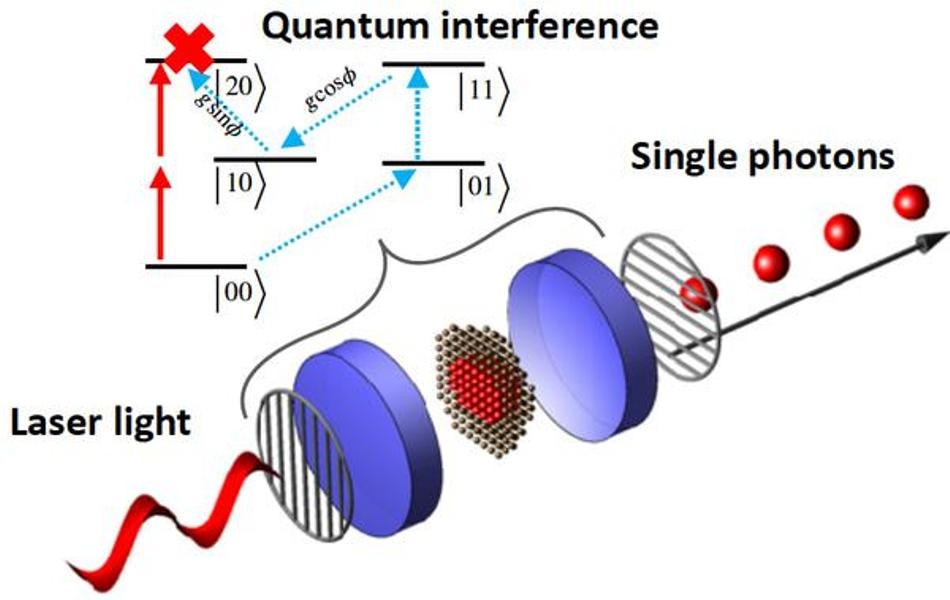Jul 27 2018
A recent collaboration between the universities of Leiden and Santa Barbara has confirmed the predictions of EPFL physicists for an innovative type of single photon source. The purported Unconventional Photon Blockade (UPB) was experimentally accomplished with the help of a semiconductor quantum dot embedded in a micropillar optical cavity.
 Image credit: EPFL
Image credit: EPFL
Huge investment from the high-tech giants has recently enabled developing quantum technologies to make it to the industry. Although the first quantum computers are typically dependent on superconducting circuits, photonics have become the most propitious platform for integrable quantum chips, and are already the basic components of quantum encryption devices that have hit the market.
Using light to process quantum information is dependent on extracting the individual photons that encode the information from the random stream of a laser source. The most traditional strategy involves trapping the laser light within an optical cavity characterized by a strongly nonlinear response.
This trapping is termed as “strong light-matter coupling,” during which the cavity does not have the ability to absorb more than one photon at a given instant of time and hence re-emits the photons, acting like a turnstile for the laser: the purported Photon Blockade. Yet, it is a highly difficult and expensive engineering task to experimentally realize a strongly nonlinear optical cavity.
First hypothesized in 2010, the UPB is another paradigm. It eases the need for strong nonlinearity and is caused due to a quantum interference effect that reduces the chances of having two photons trapped at the same instant of time in the cavity with the help of an auxiliary element, like a quantum dot, a second cavity, and so on.
In a new research reported in Physical Review Letters, the UPB was experimentally executed by the teams of Wolfgang Loffler (University of Leiden) and Dirk Bouwmeester (University of Santa Barbara) with theoretical assistance from Hugo Flayac and Vincenzo Savona from EPFL. By sending a laser light to a micropillar cavity including a semiconductor quantum dot a quite a distance from the strong coupling regime, the researchers measured the effect.
The study opens the door for considerably inexpensive and flexible single-photon sources. At present, Flayac and Savona are making efforts to adapt the mechanism to photonic crystal cavities, which are low-cost and simple pieces of silicon with appropriately arranged arrays of holes operating at room temperature.